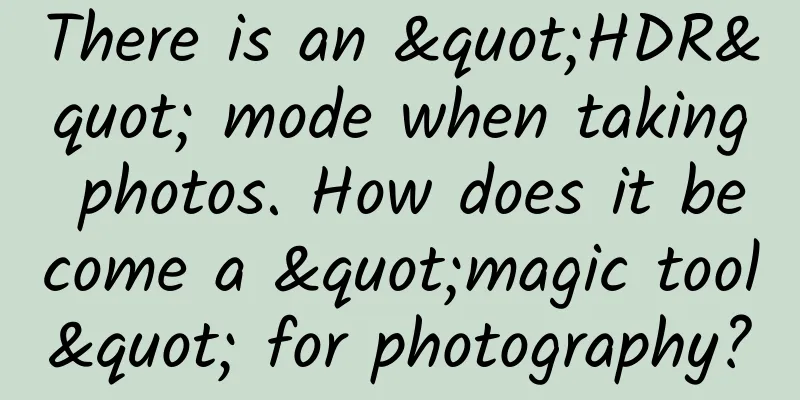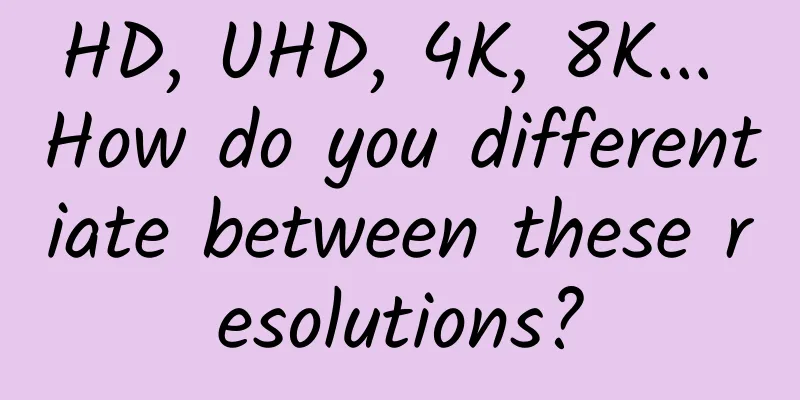There is an "HDR" mode when taking photos. How does it become a "magic tool" for photography?

|
As mobile phone and camera technology continues to improve, we often see an option called "HDR" when taking photos. This mode has been widely used in recent years, especially when shooting landscapes, buildings or backlit scenes. So, what exactly is HDR mode? How does it work? Why can using HDR make photos better in some scenes? Image source: [1] Basic concepts of HDR HDR is the abbreviation of "High Dynamic Range", which means "high dynamic range" in Chinese. In photography, dynamic range refers to the range of brightness that a camera can capture - from the darkest shadows to the brightest highlights. Generally speaking, it is difficult for ordinary cameras (even mobile phone cameras) to accurately show extremely bright and extremely dark details in the same photo. In other words, when we take a photo, we often find that some parts of the photo are overexposed (for example, the sky is too bright and details are lost), while other parts may be underexposed (for example, the details in the shadow part cannot be clearly presented). Image source: [3] The HDR mode was created to solve this problem. It combines multiple photos with different exposures to retain more details in bright and dark areas, thereby achieving a richer and more realistic image effect. The HDR mode can expand the brightness range of the image to simulate a visual effect that is closer to the human eye's perception. How HDR works The implementation of HDR relies on a technology called "multiple exposure synthesis". Specifically, when you enable HDR mode, the camera automatically takes multiple photos with different exposure times. Usually, it takes a photo with normal exposure, an overexposed photo, and an underexposed photo. These three photos capture details in different brightness ranges: overexposed photos can capture details in bright areas (such as clouds in the sky or the glow of the sunset), normally exposed photos can capture details in the medium brightness range (such as people's faces and the texture of buildings), and underexposed photos can capture dark details (such as details in shadows or images in low-light environments). Image source: [4] The camera then combines the best details from these photos to create a high dynamic range image that is neither overexposed nor underexposed. During this process, the camera uses an algorithm to identify details in different photos and blend them seamlessly to avoid unnatural synthesis. The final photo can show more details in highlights, shadows, and midtones, and the overall picture is more vivid and natural. Application of HDR mode HDR mode is widely used in many shooting scenarios, especially when shooting scenes with large brightness differences. Here are some typical application scenarios: 1 Shooting against the light When shooting against the light, the background is often much brighter than the foreground, resulting in loss of details of foreground people or objects, or overexposure of highlights in the background. The HDR mode can synthesize photos with different exposures to preserve the details of the background while increasing the brightness of the foreground, avoiding overexposure or underexposure. For example, when shooting sunrises, sunsets, or city buildings, the HDR mode can effectively enhance the expressiveness of the image. Image source: [5] 2 Landscape Photography Landscape photography often involves scenes with huge differences in brightness, such as the sky in the distance and the ground nearby. Cameras without HDR mode may cause the sky to be overexposed or the ground details to be lost. After turning on HDR mode, the camera will automatically adjust the exposure so that the clouds in the sky, the grass and the mountains on the ground can all be clearly presented, thus improving the overall effect of the photo. Image source: [2] 3 High contrast scenes In some high-contrast environments, such as indoor scenes with bright sunlight outside the window, or scenes where the light changes rapidly, HDR mode can help the camera better present the full picture of the scene. By synthesizing multiple exposures, HDR mode can balance the different brightness areas in the image, making the entire picture appear more balanced and natural. Image source: [6] 4 Night photography HDR can also play a role in night scene shooting. In low-light environments, the HDR mode can synthesize multiple photos with different exposures to reduce noise and enhance the details of dark areas, making night scene photos brighter, clearer, and retaining more details. Image source: [5] References [1]https://mp.weixin.qq.com/s/0HpLfsZZkgNC_nU19_qCvA [2]https://mp.weixin.qq.com/s/YIjyCyP_tYQtUxTY2kyJIw [3]https://mp.weixin.qq.com/s/PxDbdJtYvpWyn48bfynsEA [4]https://mp.weixin.qq.com/s/1QoM0-VdCRuPaIWfI4ZSaw [5]https://mp.weixin.qq.com/s/JVzx6shOlq3Q0dZtSE-ePA [6]https://mp.weixin.qq.com/s/a88MJulpF6rwFtEQY0rJkg Planning and production Source: Li Ke Xue Pu Editor: Yang Yaping Proofread by Xu Lailinlin |
>>: Is it true that pregnant women eating goose eggs can prevent jaundice in their babies?
Recommend
Mobei Class SEO Course 9th VIP Course 10th Optimization SEO Course 2020 Synchronous 10th
The 9th session of SEO training has started, and ...
"Creating a Precise Traffic Matrix for Video Marketing" helps novices build a fan-increasing system!
Training course video content introduction: The c...
App channel promotion skills and strategies!
As we all know, the first step in App promotion i...
Surpassing "predecessors", only 7.8 mm! The new wireless amphibious origami robot can flip and roll
When we think of robots, the images that come to ...
Microsoft to write off billions of dollars in Nokia assets
[[138618]] According to news on July 1, Microsoft...
How powerful is “Deep Sea One”?
Editor's Note In the past 2021, all walks of ...
How much does it cost to customize a book mini program in Honghe?
The factors that affect the quotation for the cus...
Developers' Notes: Three OS and Embracing Open Source Swift
In just half a month, the world's two greates...
Today is Grain Full: Wheat ears are just beginning to grow and mulberry leaves are growing
The sky is already dawning before the rooster cro...
How to improve users’ acceptance of advertising? Here are 7 techniques!
Those great advertisements often come from the bra...
Why do sunshades sometimes open and sometimes close when flying? This seemingly strange rule concerns your life safety
When flying on an airplane, many passengers prefe...
There is a cure for those who always have trouble sleeping! Experts give 7 simple and effective dietary nutrition suggestions!
Sleep disorders are common physical functional di...
How to provide GPS-related positioning services on Android
Today, due to work needs, I took out a GPS test p...
Community operation: How to cold start a community from 0 to 1?
Many Internet practitioners or students who are a...









